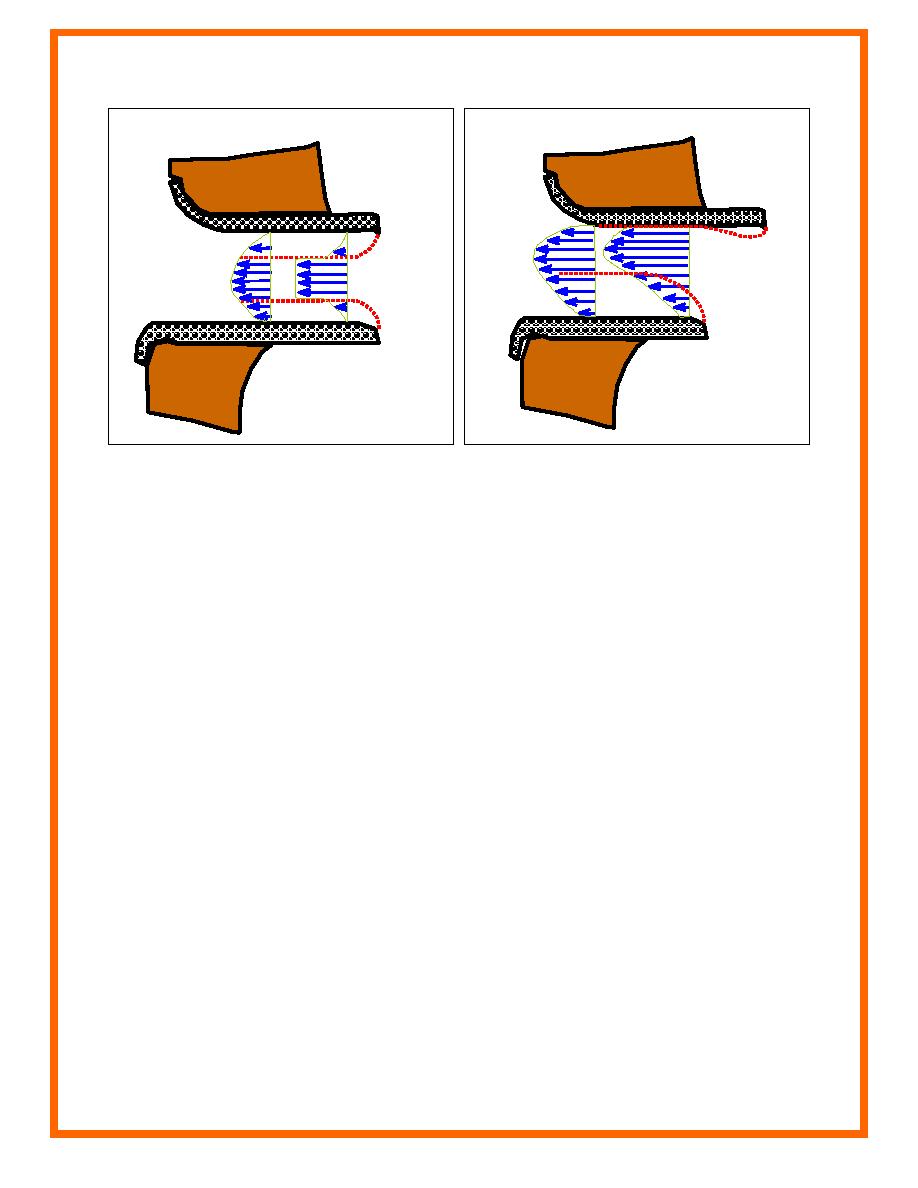
ERDC/CHL CETN-IV-29
September 2000
a
b
Ocean
Ocean
Bay
Bay
a. offset jetties
b. parallel jetties
Figure 6. Flood flow distribution for equal-length jetties
At Shinnecock Inlet migration of an ebb eddy reorients the ebb jet (Militello and Kraus 2000).
This reorientation, occurring twice per day, exerts control on the location of the entrance
channel. The process of jet and eddy formation and migration, calculated by a numerical
circulation model, is shown in 1-hr intervals in Figure 7. As the ebb cycle begins, a small eddy
east of the east jetty starts to form (Figure 7a). After 1 hr, the jet has started to form and its
direction is parallel to the jetties (Figure 7b). An eddy west of the jet has formed that is smaller
than the east eddy, and the east eddy has increased in size and migrated south. The east eddy and
jet entrain flow from each other with momentum entering the jet from the eddy's northwest side
and momentum entering the eddy on its southwest side. Coupling between the jet and east eddy
result in a curvature of the jet toward the east on its seaward end. Two hours into the ebb cycle,
the east eddy has grown and migrated south and slightly west (Figure 7c). The west eddy has
grown in size, but has remained stationary. The jet has rotated toward the southwest, but its
seaward tip still curves toward the southeast. Realignment of the jet occurs from the east eddy
pushing the jet westward as it migrates. Three hours into the ebb cycle, the east eddy has
migrated further toward the southwest, pushed the jet tip westward (Figure 7d). A third eddy has
formed west of the jet so that the jet tip is pinched between two eddies. The west eddy has
remained stationary and has not changed size. At this time, the jet is at its maximum strength
and overlies the channel.
The entrance channel to Shinnecock Inlet is dredged in an alignment parallel to the jetties. Over
time, the channel has migrated westward. Realignment of the jet by the ebb eddies is a
significant factor in the movement of the channel. Other inlets experience similar ebb current
patterns, and local ebb tidal processes can be one major control of the entrance channel
alignment.
7


 Previous Page
Previous Page
